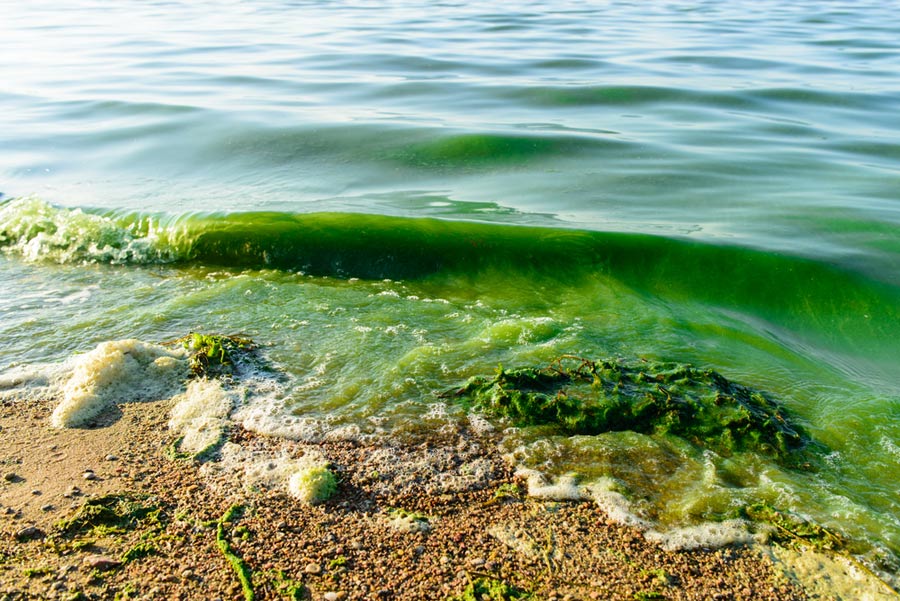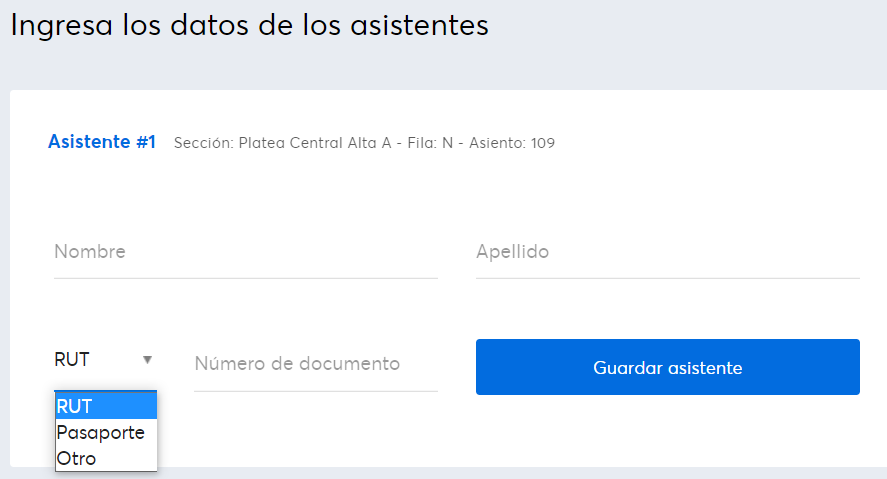California Coast Algae Bloom: Threats To Marine Ecosystems

Table of Contents
Understanding California Coast Algae Blooms
What causes algae blooms?
Harmful algal blooms occur when certain types of phytoplankton, microscopic algae, multiply rapidly, creating dense, visible patches in the water. Several factors contribute to this phenomenon:
-
Nutrient Runoff: Excess nutrients, primarily nitrogen and phosphorus, from agricultural fertilizers, sewage treatment plants, and urban runoff, act as potent fertilizers for algae, fueling their explosive growth. These nutrients are carried into coastal waters via rivers and streams, creating ideal conditions for bloom formation.
-
Climate Change: Rising ocean temperatures, altered water circulation patterns, and increased ocean acidification, all consequences of climate change, are creating more favorable conditions for HABs. Warmer waters can accelerate algal growth rates, while changes in water circulation can concentrate nutrients in specific areas.
-
Upwelling: While a natural process, upwelling, which brings nutrient-rich deep water to the surface, can also contribute to the formation of algae blooms, particularly when combined with other factors like nutrient pollution.
-
Natural Variations: Fluctuations in natural nutrient levels can also play a role, but the severity and frequency of blooms are exacerbated by human-induced factors like pollution and climate change.
Types of harmful algae and their toxins
California coast algae blooms are often composed of various harmful algae species, including Pseudo-nitzschia (which produces domoic acid) and several species of dinoflagellates. These algae produce potent neurotoxins that pose serious threats to marine organisms and humans:
-
Domoic Acid: This neurotoxin accumulates in shellfish and small fish, leading to Amnesic Shellfish Poisoning (ASP) in humans who consume contaminated seafood. It can also cause serious neurological problems in marine mammals and seabirds.
-
Brevetoxins: Produced by certain dinoflagellates, brevetoxins can cause neurotoxic shellfish poisoning and respiratory problems in humans exposed to aerosolized toxins during intense blooms. They also affect the nervous systems of marine organisms.
The impact of these toxins varies depending on the species and concentration. Bioaccumulation, the process where toxins accumulate in an organism's tissues, and biomagnification, where toxin concentrations increase as you move up the food chain, further amplify the negative effects.
Impacts on Marine Ecosystems
Effects on marine life
California coast algae blooms have devastating consequences for marine life:
-
Mass Mortality Events: Large-scale die-offs of fish, marine mammals (such as sea lions and whales), and seabirds are frequently associated with HABs. Toxins produced by the algae directly poison these animals, often leading to respiratory failure, neurological damage, and death.
-
Disrupted Food Webs: Algal blooms can deplete oxygen levels in the water (hypoxia) creating "dead zones" where marine life cannot survive. The deaths of key species disrupt the intricate food web, triggering trophic cascades and impacting entire ecosystems.
-
Shellfish Impacts: Shellfish, like mussels and clams, filter feed and accumulate toxins in their tissues, making them unsafe for human consumption. This poses a significant threat to shellfisheries and the livelihoods of those who depend on them.
-
Habitat Degradation: The excessive growth of algae can smother seagrass beds and coral reefs, destroying crucial habitats for many marine species and reducing overall biodiversity.
Impacts on human health
The consequences of California coast algae blooms extend to human health:
-
Shellfish Poisoning (ASP): Consuming shellfish contaminated with domoic acid can lead to Amnesic Shellfish Poisoning (ASP), causing symptoms ranging from gastrointestinal distress to memory loss and even death.
-
Respiratory Issues: During particularly intense blooms, aerosolized toxins can cause respiratory problems, such as coughing, wheezing, and shortness of breath, in people living near affected areas.
-
Skin Irritation: Direct contact with affected waters can lead to skin irritation or allergic reactions in some individuals.
Regular monitoring of water quality and the timely dissemination of public health advisories are essential for protecting human health from the risks associated with California coast algae blooms.
Mitigation and Management Strategies
Reducing nutrient pollution
Addressing the root causes of algae blooms is crucial:
-
Stricter Regulations: Implementing stricter regulations on agricultural runoff and wastewater treatment is vital to reduce the input of excess nutrients into coastal waters.
-
Sustainable Agriculture: Promoting sustainable agricultural practices, such as precision fertilizer application and cover cropping, can minimize nutrient runoff from farmland.
-
Improved Infrastructure: Investing in improved stormwater management infrastructure, including wetlands restoration and constructed wetlands, can help filter pollutants before they reach coastal waters.
Community involvement and citizen science initiatives can play a crucial role in monitoring pollution sources and advocating for effective policies.
Monitoring and early warning systems
Effective monitoring and early warning systems are essential for managing algae blooms:
-
Continuous Monitoring: Regular monitoring of water quality parameters, including nutrient levels and the presence of harmful algae species, allows for early detection of blooms.
-
Advanced Forecasting: Development and implementation of advanced forecasting models can help predict the timing, location, and intensity of future blooms.
-
Public Awareness: Effective communication strategies and public awareness campaigns are essential to inform the public about the risks associated with HABs and to ensure timely responses to bloom events.
Conclusion:
California coast algae blooms pose a serious and growing threat to the state's invaluable marine ecosystems and human health. Understanding the complex interplay of factors that contribute to these blooms, along with their far-reaching consequences, is the first step towards effective management. By combining efforts to reduce nutrient pollution, implementing robust monitoring and early warning systems, and fostering collaboration among scientists, government agencies, and the public, we can work to mitigate the harmful effects of these blooms and protect the health and vitality of California's coastal waters. Learn more about California coast algae blooms and how you can get involved in conservation efforts. Take action today to protect our oceans from the devastating impacts of harmful algal blooms.

Featured Posts
-
 Virtual Venue De Ticketmaster Compra De Entradas Reimaginada
May 30, 2025
Virtual Venue De Ticketmaster Compra De Entradas Reimaginada
May 30, 2025 -
 Cool Wet And Windy Weather Arrives In San Diego
May 30, 2025
Cool Wet And Windy Weather Arrives In San Diego
May 30, 2025 -
 Texas Measles Outbreak Unlinked Cases Fuel State Wide Rise
May 30, 2025
Texas Measles Outbreak Unlinked Cases Fuel State Wide Rise
May 30, 2025 -
 Schools Closed Again Winter Storm Brings Another Day Of Closures
May 30, 2025
Schools Closed Again Winter Storm Brings Another Day Of Closures
May 30, 2025 -
 Marine Le Pen Condamnee 5 Ans D Ineligibilite Et Les Reactions Politiques
May 30, 2025
Marine Le Pen Condamnee 5 Ans D Ineligibilite Et Les Reactions Politiques
May 30, 2025
Latest Posts
-
 Up To 30 Off Enjoy A Lavish Hotel Stay This Spring
May 31, 2025
Up To 30 Off Enjoy A Lavish Hotel Stay This Spring
May 31, 2025 -
 Book Now And Save 30 Off Lavish Spring Hotel Stays
May 31, 2025
Book Now And Save 30 Off Lavish Spring Hotel Stays
May 31, 2025 -
 The Reality Of Ai Navigating The Challenges Of Responsible Ai Development
May 31, 2025
The Reality Of Ai Navigating The Challenges Of Responsible Ai Development
May 31, 2025 -
 Luxury Hotel Spring Break 30 Off Your Stay
May 31, 2025
Luxury Hotel Spring Break 30 Off Your Stay
May 31, 2025 -
 Why Ai Doesnt Learn And How This Impacts Responsible Ai Practices
May 31, 2025
Why Ai Doesnt Learn And How This Impacts Responsible Ai Practices
May 31, 2025
